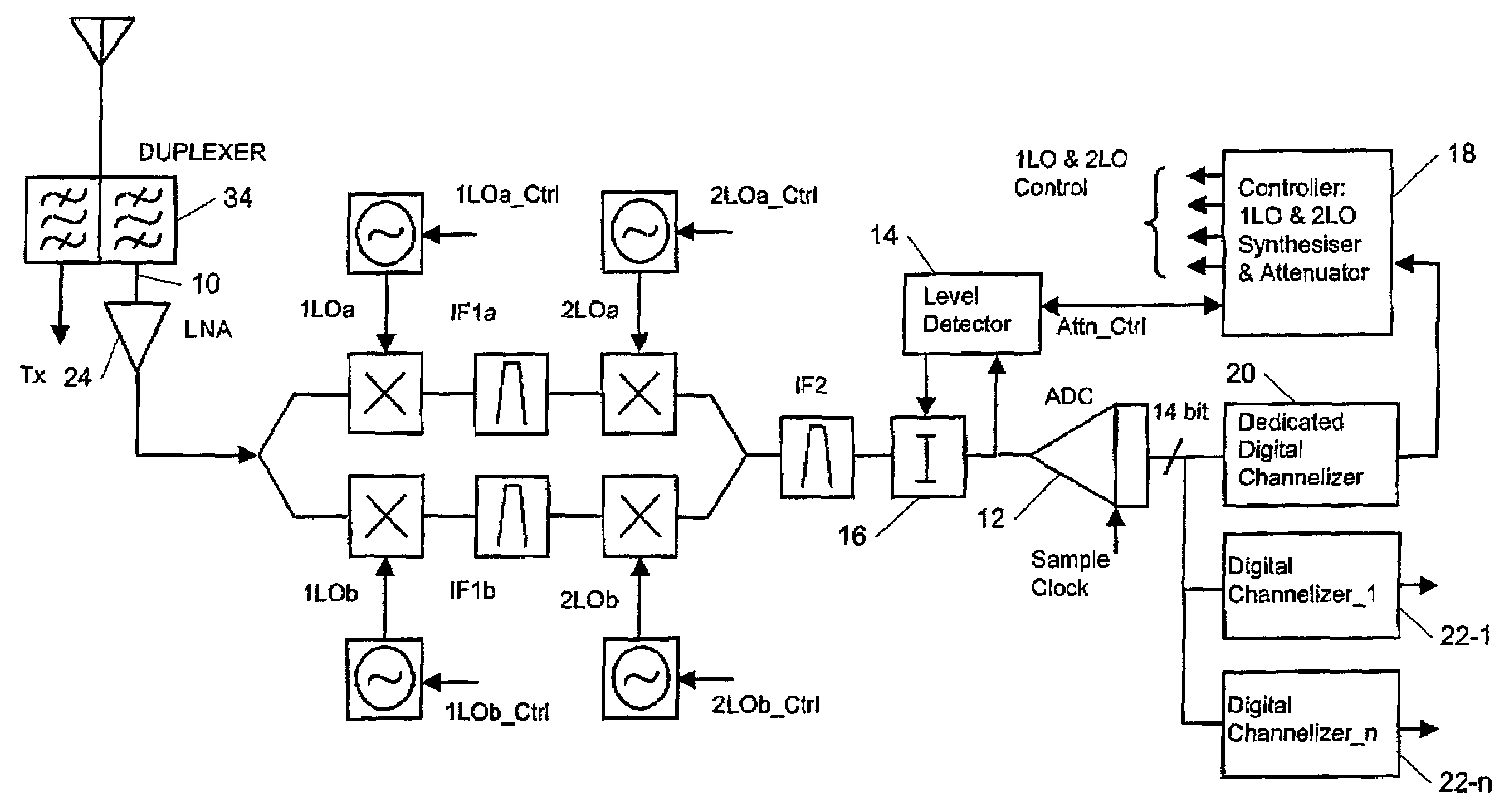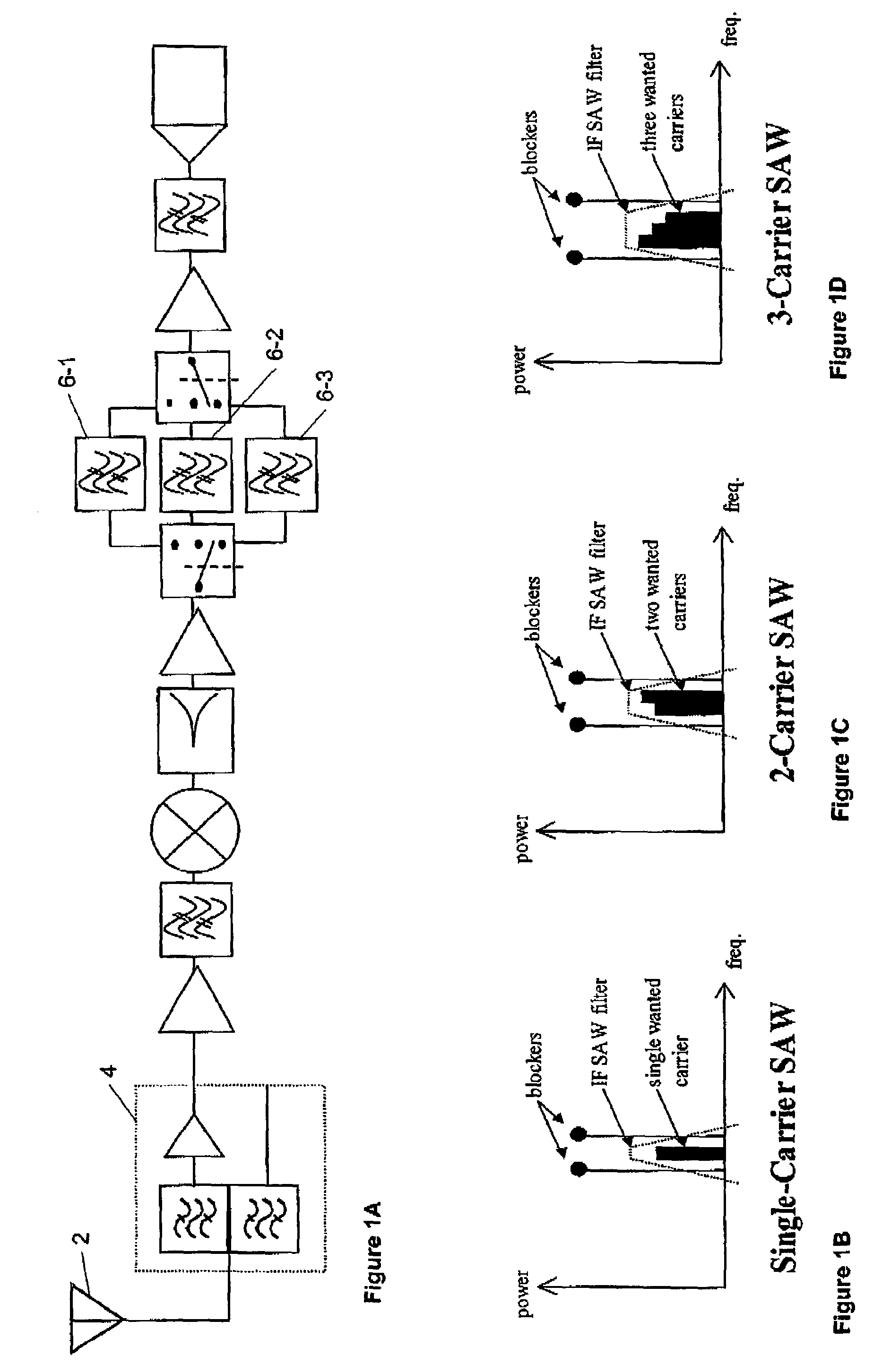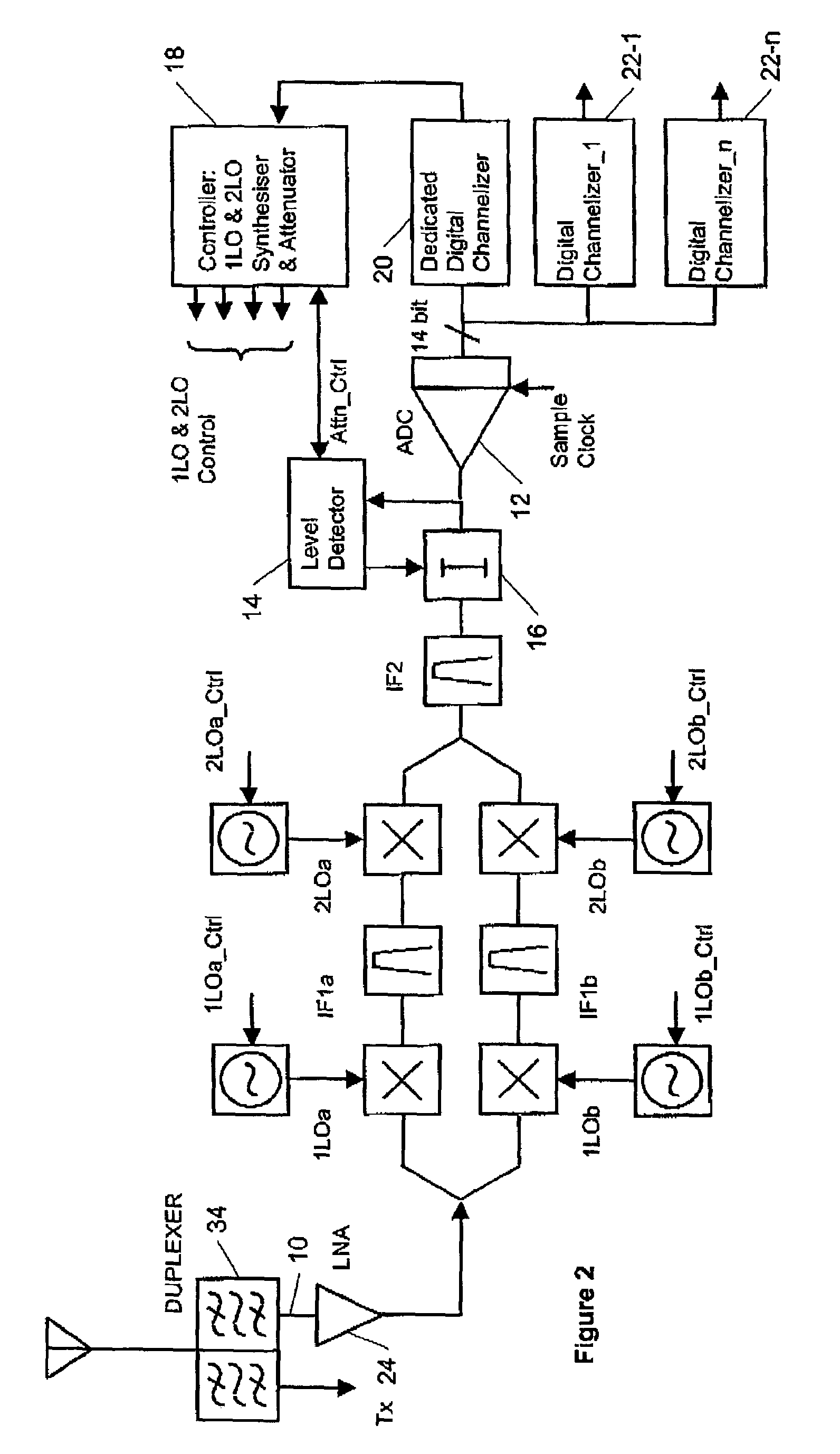Interference rejection in a radio receiver
- Summary
- Abstract
- Description
- Claims
- Application Information
AI Technical Summary
Benefits of technology
Problems solved by technology
Method used
Image
Examples
Embodiment Construction
[0020]As noted above, wideband radio (or software defined radio) is a desirable goal since it allows re-use of a single receiver for multiple modes i.e. to allow a reception of signals such as cellular mobile radio signals transmitted according to different standards. The general principle is to have a receiver capable of receiving over a relatively wide range typically of the order of several tens of MHz. The received signal is then sampled using an analogue to digital converter and processed to isolate the separate channels (separate narrow portions of the received frequency spectrum) and to process those channels to extract transmitted data according to the appropriate transmission mode. Thus, the base station may be used to receive different modes simply by altering the processing algorithm which is performed on the data once it is sampled.
[0021]However, in order to meet the present standards it is necessary to be able to cope with high level interference whilst retaining suffic...
PUM
 Login to View More
Login to View More Abstract
Description
Claims
Application Information
 Login to View More
Login to View More - R&D
- Intellectual Property
- Life Sciences
- Materials
- Tech Scout
- Unparalleled Data Quality
- Higher Quality Content
- 60% Fewer Hallucinations
Browse by: Latest US Patents, China's latest patents, Technical Efficacy Thesaurus, Application Domain, Technology Topic, Popular Technical Reports.
© 2025 PatSnap. All rights reserved.Legal|Privacy policy|Modern Slavery Act Transparency Statement|Sitemap|About US| Contact US: help@patsnap.com



